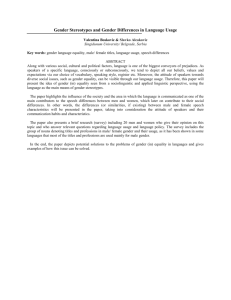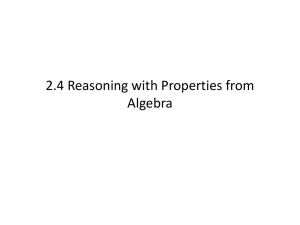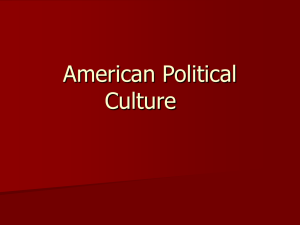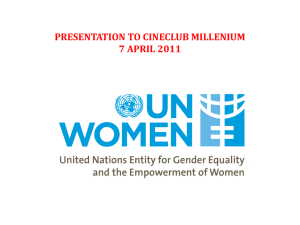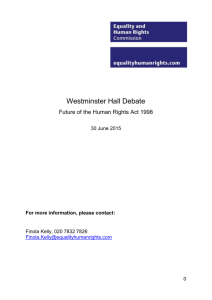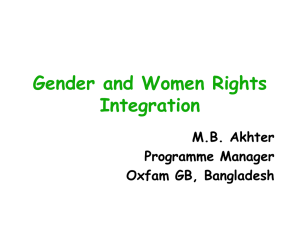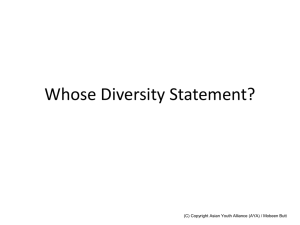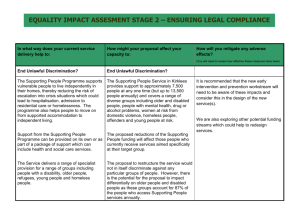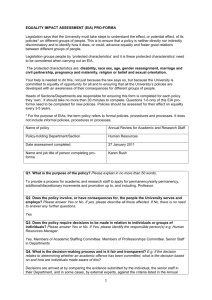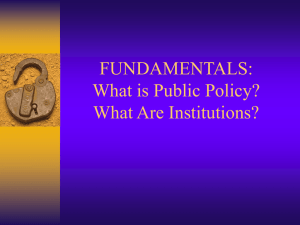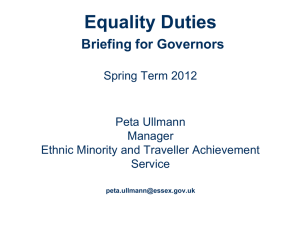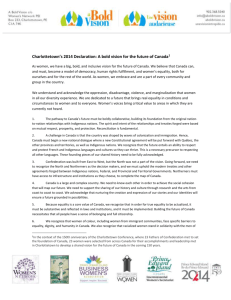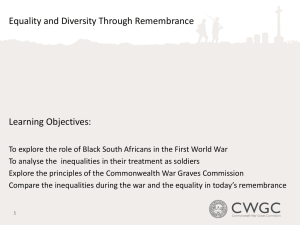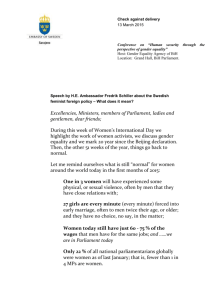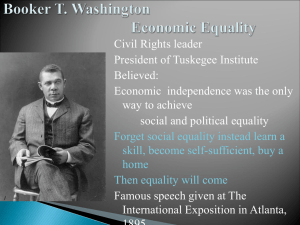Stuart_Guest_Lecture
advertisement
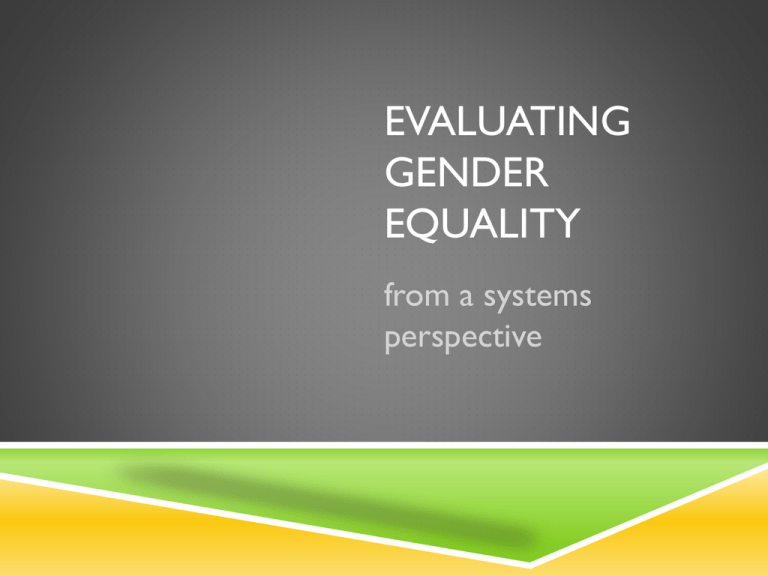
EVALUATING GENDER EQUALITY from a systems perspective WHAT THIS PRESENTATION COVERS INTRODUCTION What is gender equality? What are we trying to change? What do we know about a theory of change for progress on gender equality? Pause for questions and comments EVALUATING GENDER EQUALITY Evaluating gender capacity (architecture) Evaluating strategic gender interventions Evaluating mainstreaming Pause for questions and comments Looking at the draft MDG on gender equality (exercise) Other dimensions of equity (time permitting) WHAT IS GENDER EQUALITY? Equality between women and men (gender equality): refers to the equal rights, responsibilities and opportunities of women and men and girls and boys. Equality does not mean that women and men will become the same but that women’s and men’s rights, responsibilities and opportunities will not depend on whether they are born male or female. UN Women http://www.un.org/womenwatch/osagi/conceptsandefinitions.htm WHY IS GENDER EQUALITY IMPORTANT? Because fully using the talent, creativity and energy of every human being strengthens societies – you can’t go very fast if you leave half the population lagging behind (World Bank report 2012; BRAC 1994) Because discrimination against any group is unjust – women’s rights are human rights (UN Conference on Human Rights,Vienna 1994) DIFFERENT BELIEFS ABOUT GENDER RELATIONS Gender relations are biologically determined (see Fine, Delusions of Gender) Gender relations are socially constructed Dinnerstein, Mermaid and Minotaur) Gender relations are divinely ordained It’s the economy, stupid (see K. Marx) (see GENDER ANALYSIS ASKS THE FOLLOWING QUESTIONS ABOUT WORK INSIDE THE FAMILY AND IN THE LARGER SOCIETY Who does what? Who has access to and controls resources and benefits? Who has decision-making power and influence? WHAT NEEDS TO CHANGE TO FOSTER GREATER EQUALITY BETWEEN WOMEN AND MEN? WHAT ARE WE TRYING TO CHANGE? Individual Change Women’s and men’s consciousness Access to resources & opportunities Informal Formal Informal cultural norms and exclusionary practices Formal laws, policies, etc. Institutional/Systemic change ARTICULATING OUR THEORY OF CHANGE & MAPPING A CHANGE STRATEGY TO LOOK AT THE FINAL FRAMEWORK, WATCH THIS VIDEO http://www.youtube.com/watch?v= vJG698U2Mvo WHY IT’S EASY TO PERPETUATE GENDER INEQUALITY We ‘see’ what we expect to see We ‘see’ what reinforces our existing beliefs– we ignore contradictory evidence If we do see something unexpected, we tend to explain it to align with existing beliefs ‘it’s the exception that proves the rule’ Habits and beliefs, especially deeply formed habits like those about gender relations, are more likely to be invisible BUT WE CAN TEACH OURSELVES TO BE MORE AWARE RESOURCES www.genderatwork.org Cordelia Fine, Delusions of Gender, New York, Norton 2010 Dorothy Dinnerstein, The Mermaid and The Minotaur, Harper & Row 1976 Women’s Empowerment in Agriculture Index http://www.ifpri.org/publication/womens-empowerment-agricultureindex http://care.ca/sites/default/files/files/publications/IWDreport-med.pdf http://www.ilo.org/dyn/gender/docs/RES/536/F932374742/web%20gende r%20manual.pdf THANK YOU



